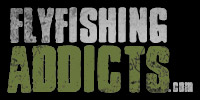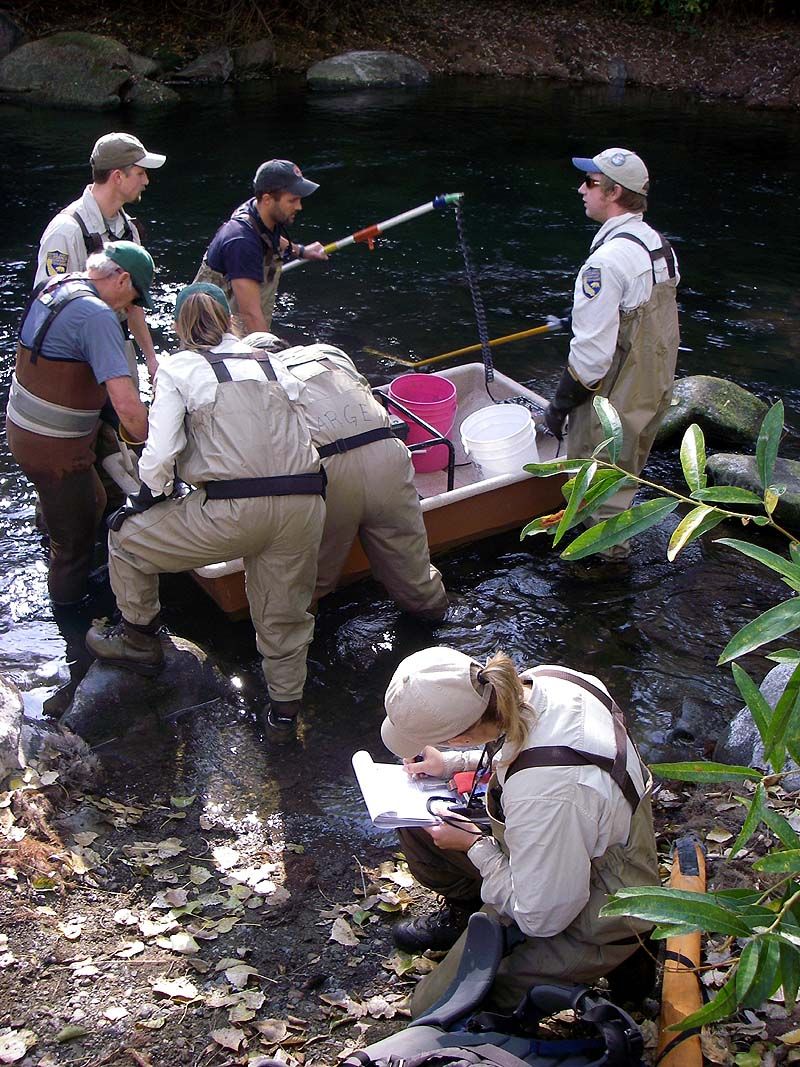
Preparing the electroshock barge for the day
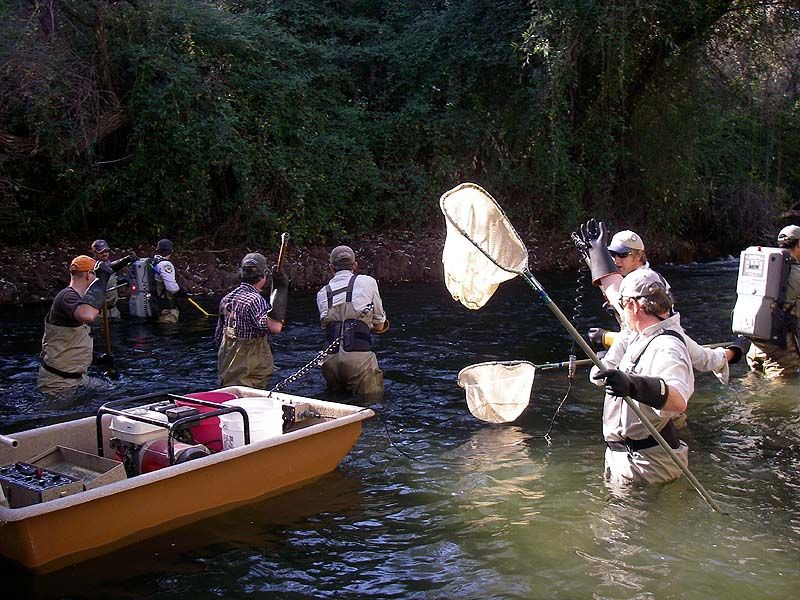
The goal is to form a line across the stream to find all the fish!!!
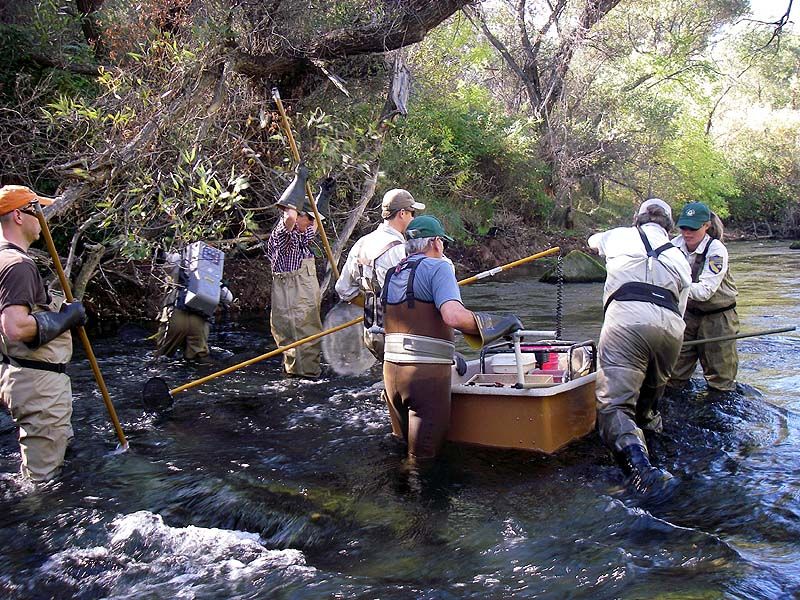
Gotta push the barge over lots of rocks and overhanging vegetation, Not very easy some times!!!
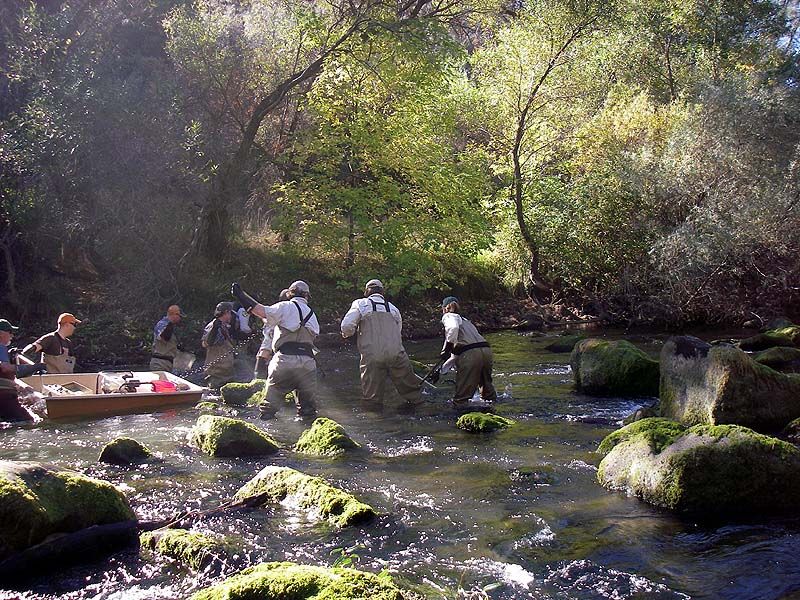
Shocking and netting activities underway
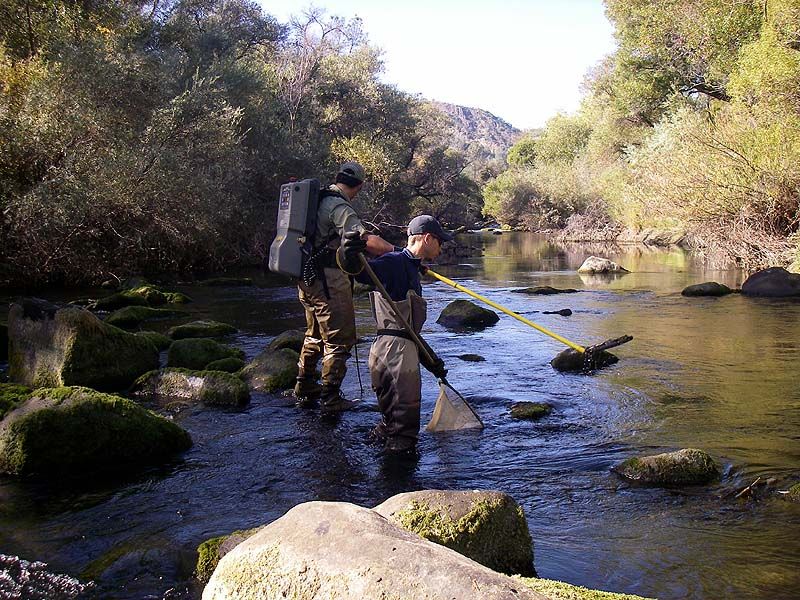
Sampling a small side channel for fish using a backpack electroshocker
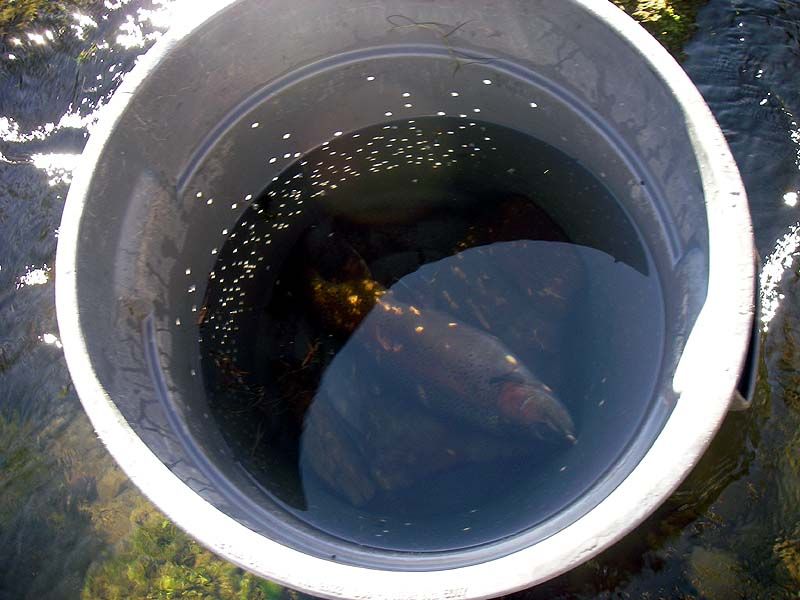
The fish get placed into a "side car" for further data collection. Nothing more than a trash can with holes punched in it! My job was to haul the "side car" upstream in back of the "netters" who would drop the shocked fish into the "side car". Most of the fish were small, but a few larger fish were taken
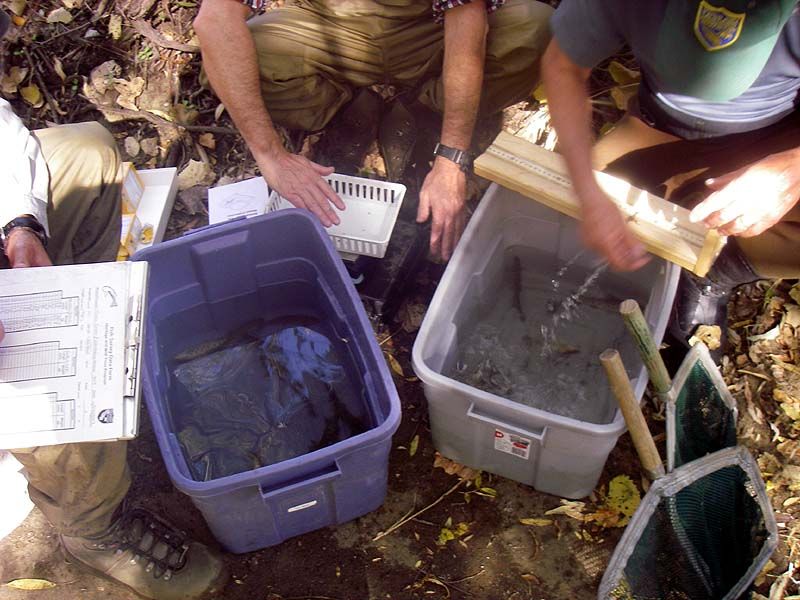
All of the collected fish were then taken to the data stations for measuring, weighing, and data recording

Soothes human tummies, and also trout! The fish were first placed into a container that contained Alka Seltzer and water. This calms the fish a bit for handling for data collection.
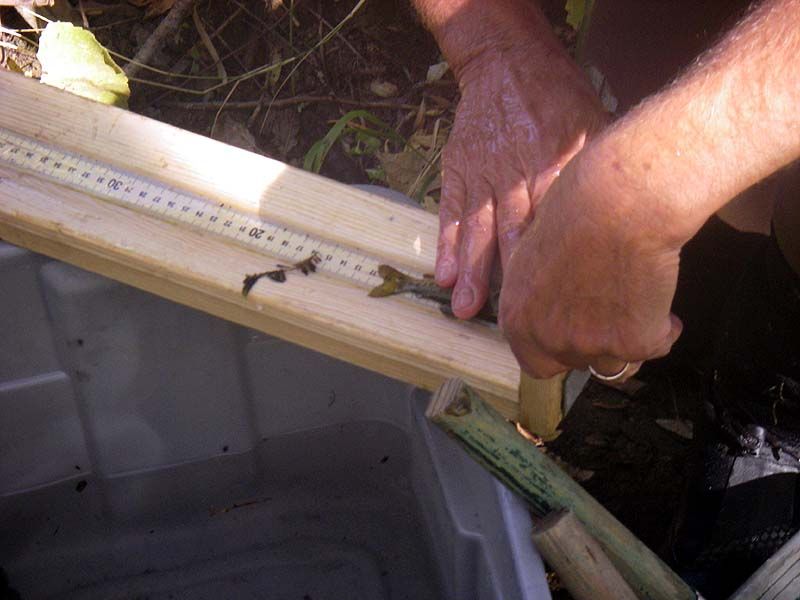
They were then measured....

Yes, many tried to escape!!!
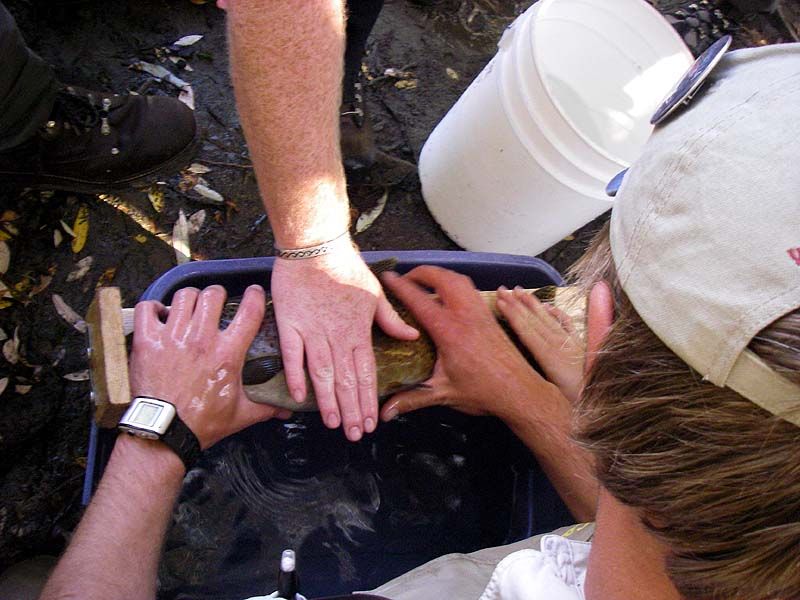
Bigger fish require many hands!!!
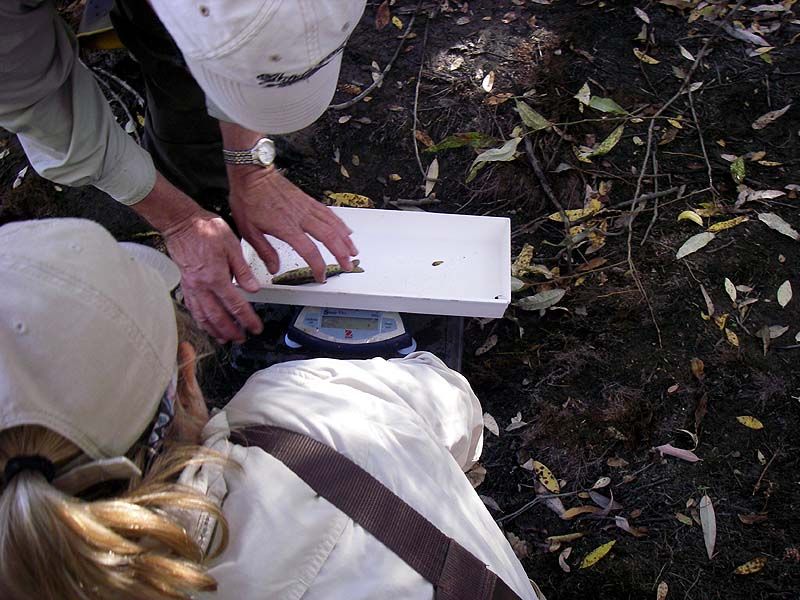
and then weighed on a gram scale while trying to keep them from jumping out. Quite challenging to weigh a fish in tenths of the grams while they flop around!

Bigger fish get weighed the old fashioned way!!!
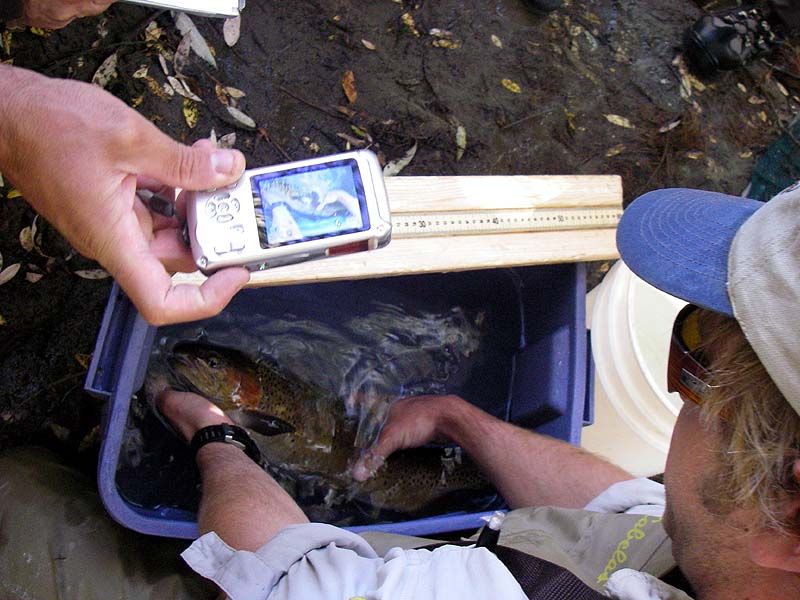
And then they get their picture taken. I had the "tough" job of doing the pictures!!!

Selected fish get scale samples taken for later analysis
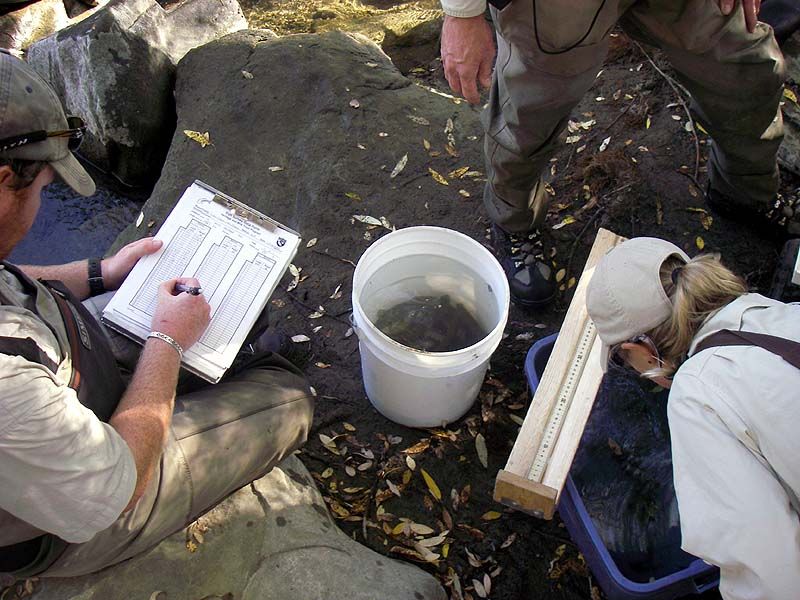
All the data needs to be recorded
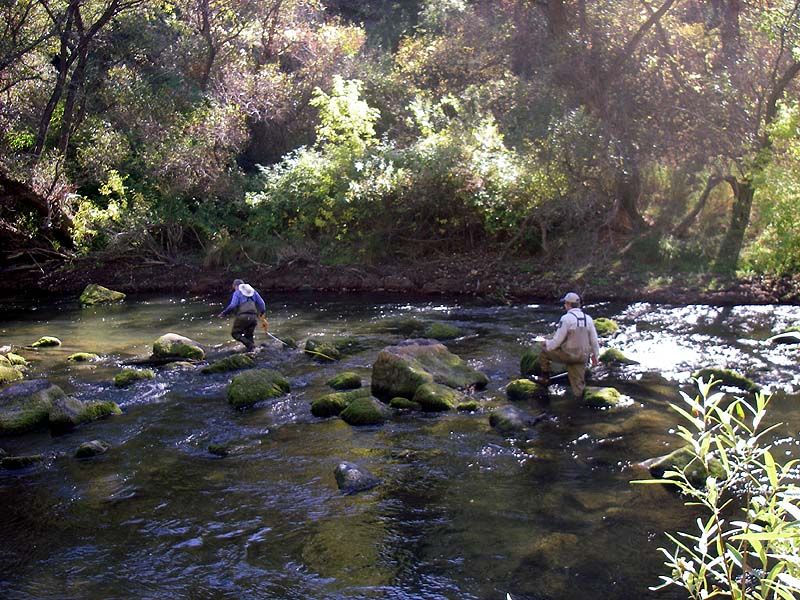
Habitat in and around the stream also gets examined. A survey crew is measuring the sample area.
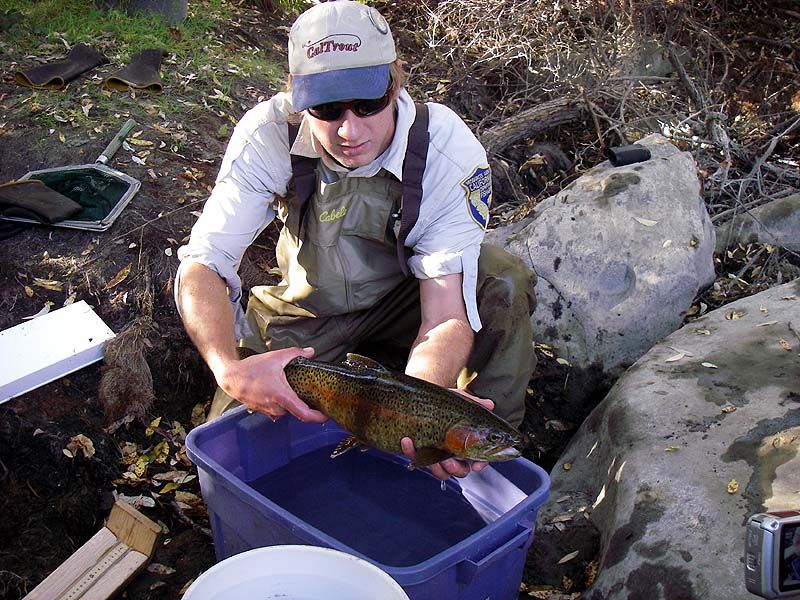
Unfortunately, big fish do not tolerate electroshocking sometimes. The dark band in the middle is a bruise caused by electroshocking.

Reviving a bigger fish. Smaller fish recover very quickly, but bigger fish require more TLC

Swimming away and hopefully going back home to be caught by me!
